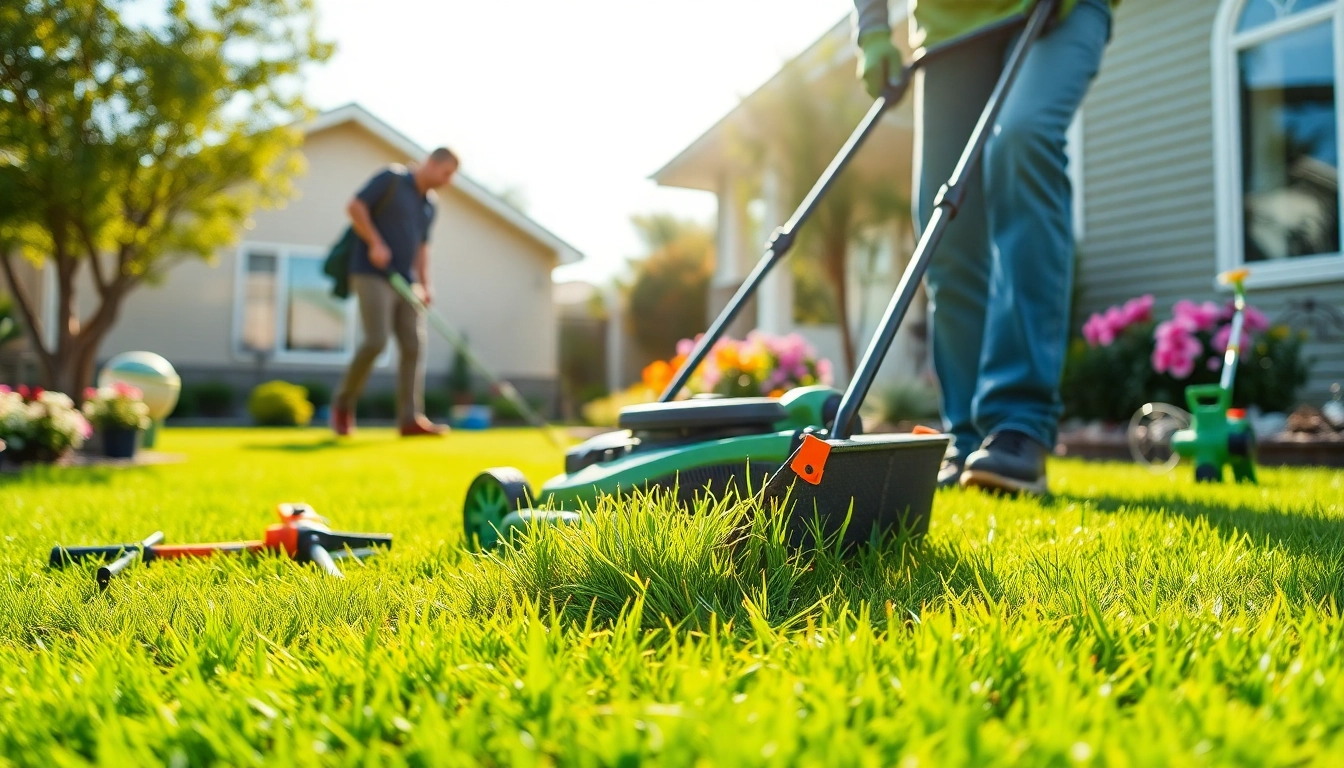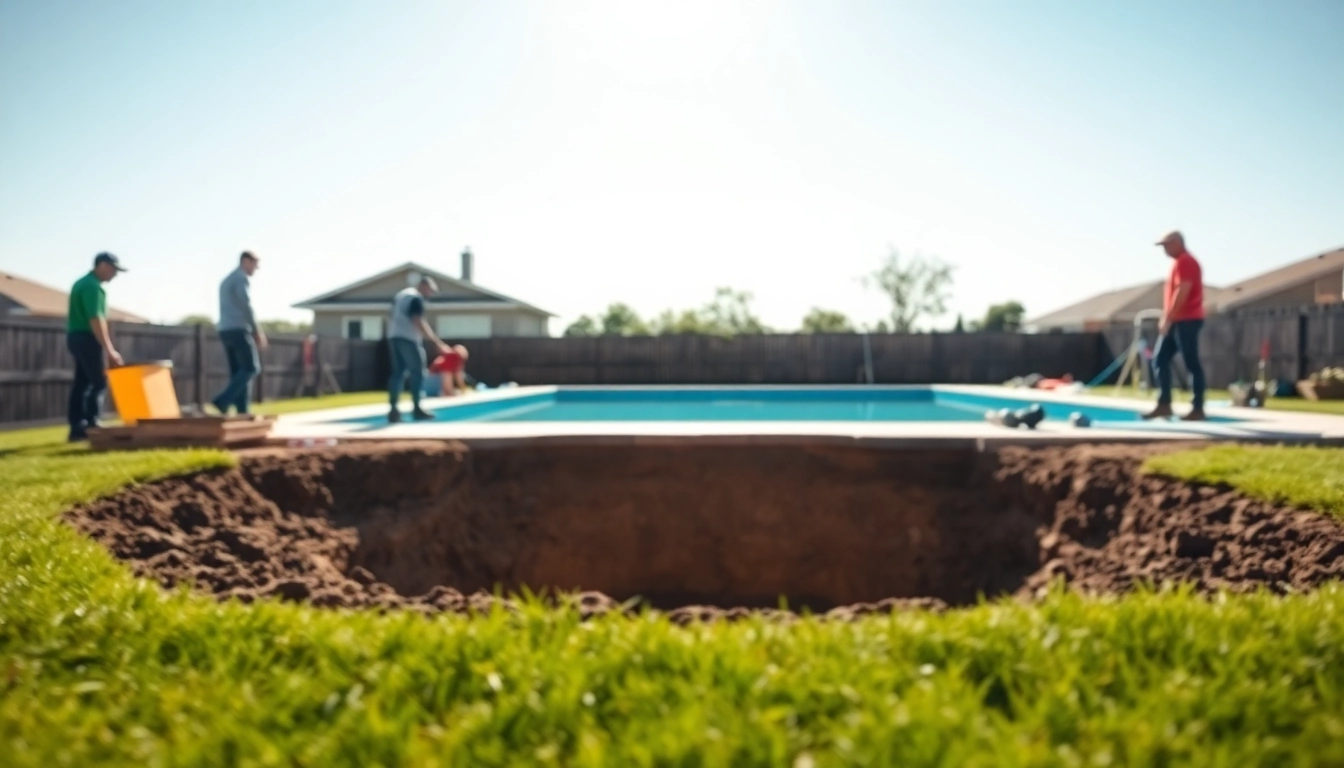Understanding Turf Maintenance Service
What is Turf Maintenance Service?
Turf maintenance service encompasses a range of practices and activities that aim to keep lawns and grassy areas in optimal health and appearance. This can include mowing, watering, fertilization, aeration, pest control, and overseeding. Proper turf maintenance is foundational for achieving lush, green grass that thrives year-round. A well-maintained lawn not only enhances curb appeal but also contributes to a healthier ecosystem by supporting local wildlife and reducing soil erosion. For those looking to invest in a comprehensive approach, engaging with a professional turf maintenance service can yield significant long-term benefits.
Importance of Regular Turf Maintenance
Regular turf maintenance is crucial for several reasons. First, it ensures the health and longevity of the grass by providing the necessary nutrients and care it requires to thrive. Consistent mowing prevents the grass from maturing too quickly, promotes denser growth, and reduces weeds. Additionally, proper watering techniques can prevent drought stress and foster deep root growth, which is essential for survival during unfavorable weather conditions.
Moreover, neglected lawns can lead to common issues, such as pest infestations or disease outbreaks, which can severely diminish grass quality. Ultimately, regular turf maintenance can save both time and money in the long run by preventing costly repairs and replacements.
Common Turf Issues and Solutions
Common issues that affect the turf include weeds, pests, diseases, and environmental stresses. Weeds compete with grass for nutrients and sunlight, adversely affecting the overall health of the lawn. To combat this, applying pre-emergent herbicides during the early growing season can help prevent weed seedlings from taking root.
Pests, such as grubs and chinch bugs, can cause significant damage if left unchecked. Conducting regular inspections and utilizing targeted insecticides or natural predators can mitigate their impact. Turf diseases such as dollar spot or brown patch can be managed through the application of fungicides and by ensuring appropriate watering practices to minimize excess moisture.
Environmental stresses, including heat and drought, can be addressed by adjusting watering schedules and utilizing mulch to cool the soil and retain moisture. Understanding these common challenges and proactively implementing solutions is key to effective turf maintenance.
Key Practices in Turf Maintenance Service
Mowing Techniques for Optimal Growth
Mowing is one of the most visible components of turf maintenance service and significantly affects grass health and appearance. Adjusting the mower height according to grass type is essential; for instance, cool-season grasses generally do best when mowed to a height of 2.5 to 3.5 inches, while warm-season grasses may thrive at 1.5 to 2.5 inches.
Moreover, mowing frequently enough to remove no more than one-third of the grass blade at a time promotes healthier growth and reduces stress on the plant. It’s also beneficial to alternate mowing patterns to reduce soil compaction and improve the lawn’s overall aesthetic.
Watering Strategies for Healthy Turf
Watering is a critical aspect of turf maintenance, yet it requires careful strategy to avoid overwatering or underwatering. Generally, lawns need about one to two inches of water per week, which can be achieved through rainfall or irrigation. Early morning is the best time to water, as it allows for maximum absorption and minimizes evaporation.
Using a rain gauge or soil moisture sensor can help accurately measure the amount of water being applied. Additionally, employing deep and infrequent watering encourages deeper root growth, which fosters drought resistance and enhances overall turf health.
Fertilization Best Practices
Fertilization is vital for maintaining a lush lawn, but it must be conducted judiciously to prevent nutrient runoff and weed growth. Conducting a soil test can determine the existing nutrient levels and help in choosing the appropriate type and amount of fertilizer. Typically, a balanced fertilizer with equal parts nitrogen, phosphorus, and potassium is suitable for most lawns.
Applying fertilizer in the growing season, generally during spring and fall, allows the grass to absorb nutrients effectively during its peak growth phases. Using slow-release fertilizers can provide a more consistent nutrient supply and reduce the risk of burning the grass.
Tools Needed for Effective Turf Maintenance Service
Essential Equipment for Lawn Care
Having the right tools is critical for effective turf maintenance service. Essential equipment includes a high-quality mower, which can range from push mowers for smaller areas to riding mowers for larger properties. Additionally, a reliable irrigation system or sprinkler is necessary for maintaining proper moisture levels.
Other useful tools include aerators for alleviating soil compaction, dethatchers for removing thatch build-up, and spreaders for even distribution of fertilizers and grass seeds. Each tool should be selected based on specific lawn care needs to maximize effectiveness and efficiency.
Maintaining Your Tools for Longevity
Proper maintenance of lawn care tools not only extends their lifespan but also ensures they perform optimally when needed. Regular cleaning of equipment after use removes grass clippings and dirt, which can lead to rust or corrosion. Blades should be sharpened regularly to promote clean cuts and prevent stress to the grass.
Additionally, checking fuel and oil levels, and ensuring that all moving parts are correctly lubricated, helps maintain efficiency. Keeping tools stored in a dry, clean area when not in use will prevent premature wear and damage.
Investing in Quality vs. Budget Tools
When it comes to lawn care tools, investing in quality equipment can pay off in the long run. While budget tools may be less expensive upfront, they may not offer the durability, functionality, and reliability of higher-end products. Quality tools often provide better performance and require less frequent replacement.
Evaluating needs against budget constraints is crucial. For those who frequently engage in lawn maintenance, investing in quality equipment can lead to greater efficiency and results. However, for occasional gardeners or those with limited space, lighter, budget-friendly tools may suffice.
Seasonal Considerations in Turf Maintenance Service
Spring Care and Preparation
As the growing season begins, spring is the ideal time for turf revitalization. A thorough spring cleanup involves removing debris, leaves, and dead grass. This is also when aeration should be performed to relieve soil compaction and allow nutrients and water to penetrate deeper. Following aeration, overseeding can be implemented to fill in bare spots and improve turf density.
Applying pre-emergent herbicides during this time will help thwart the germination of summer weeds, setting the stage for a healthy lawn as it enters the warmer months. Additionally, fertilizing with a balanced product can give the grass the boost it needs to kick-start growth after dormancy.
Summer Turf Challenges and Management
Summer presents unique challenges for turf maintenance, primarily due to increased temperatures and potential drought conditions. Lawns may experience stress from heat, so it’s essential to adjust watering practices to ensure that the turf receives sufficient moisture without encouraging disease.
Regular mowing during summer should include keeping the mower height higher to provide shade to the grass roots, promoting deeper root growth and reducing heat stress. Monitoring for pests and diseases becomes particularly important, as these challenges tend to escalate in warmer weather.
Preparing Your Turf for Fall and Winter
As summer fades, preparing the turf for fall and winter is critical to ensuring its health through the colder months. Fertilization in late fall encourages root development and sets the stage for early spring growth. Aerating the lawn during this time helps to improve soil health as the grass prepares for dormancy.
Implementing a final mowing of the season at a lower height contributes to preventing snow mold and other winter diseases. Additionally, applying a winterizing fertilizer can help enhance resistance to harsh conditions, ensuring robust growth once spring returns.
Measuring Success in Turf Maintenance Service
Performance Metrics for Lawn Health
Measuring the success of turf maintenance involves tracking performance metrics regarding lawn health and appearance. Indicators such as grass density, color, and growth rate provide insight into the effectiveness of maintenance practices. Regularly assessing soil conditions and plant health validates the protocols put in place for irrigation, fertilization, and pest management.
Utilizing visually objective measures, like lawn inspections for uniformity and absence of weeds, can also serve as benchmarks. Documenting maintenance activities and results can aid in future adjustments to improve overall outcomes.
Customer Satisfaction and Lawn Aesthetics
For professional turf maintenance services, customer satisfaction is a critical achievement metric. Regular feedback from clients, including visual assessments and direct communication regarding their concerns, can inform service enhancements.
The aesthetic quality of a lawn plays a significant role in gauging success. A vibrant, lush lawn that meets client expectations fosters loyalty and can lead to referrals for future business opportunities.
Adjusting Practices Based on Results
Continuous improvement must be a part of any effective turf maintenance strategy. Analyzing results and adjusting practices based on performance metrics, feedback, and changing conditions ensures long-term success. Lawn care is not static; as seasons and environmental conditions evolve, adapting management strategies will promote optimal lawn health and aesthetics.
For example, if a specific fertilization technique does not yield the expected results, consider an alternative product or a different application method. This dynamic approach not only enhances the quality of the lawn but also demonstrates a commitment to excellence in turf maintenance service.















Leave a Reply